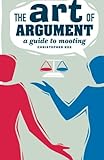The art of argument : A guide to mooting
Publication details: Cambridge Cambridge University Press 2006Description: 151p xvISBN:- 978-0-52168-513-9
- 340.070000 KEE-2
| Item type | Current library | Shelving location | Call number | Status | Barcode | |
|---|---|---|---|---|---|---|
 BOOKs
BOOKs
|
National Law School | Library Compactors | 340.07 KEE-2 (Browse shelf(Opens below)) | Available | 22873 |
Browsing National Law School shelves,Shelving location: Library Compactors Close shelf browser (Hides shelf browser)
Contents:
Preface xi;
Acknowledgments xv;
Part 1 Making the most of a moot:
1 Introduction 3;
What is mooting? 3;
Why join a moot team? 4;
Job opportunities 4;
Team work 4;
Intensive training 5;
International travel 5;
New perspectives 5;
How to use this book 6;
2. You’ve made the team – what next? 7;
Before you begin 7;
Timing and commitment 7;
What about money? 8;
The moot problem 10;
Read the problem 10;
Read the rules of the competition 10;
Asking for help 11;
Setting deadlines 12;
3 Being part of a team 13;
The keys to a successful team 13;
Attitude 13;
Identify strengths and weaknesses in the team 13;
Dealing with a crisis of confidence 14;
Maintaining trust 15;
Do you need to be friends? 16;
4 Building an argument 18;
The basic steps 18;
Step 1 – Read the facts and decide instinctively who should win 18;
Step 2 – Identify who you are representing 19;
Step 3 – Compile a list of arguments 20;
Step 4 – Imagine you represent the other side 20;
Step 5 – Repeat steps 3 and 4 at least five times 21;
5 Written documents 23;
Memoranda and memorials 23;
The tips and tricks of writing 24;
Knowing your purpose and your audience 24;
Setting up your document 26;
Referencing 29;
Writing style 34;
Presenting information to the team scribes 35;
Structuring your document 36;
Basic rules of writing 39;
Editing 44;
The second document 46;
Preparing a genuine response 46;
The outline of submissions 49;
The casebook 50;
6 Oral submissions 52;
How to structure an oral submission 54;
Making a start 54;
Dealing with the expectations of moot masters 55;
Creating a persuasive case 56;
Handling questions 60;
Responding to a submission 69;
Presenting an oral submission 71;
Preparation 72;
Physical appearance 72;
Time keeping 73;
Opening formalities 74;
Using case materials 77;
Voice and delivery 79;
Body language 82;
Speaking from notes 83;
Building rapport with the moot master 87;
Know how the moot is to be run 89;
Dealing with mistakes 92;
Continue the team work 92;
7 Practice moots 94;
When to start doing practice moots 94;
Who can be a practice moot master? 95;
Variety is key 95;
Using experienced moot masters 96;
Making the most of practice moots 97;
Record the moot 98;
Inter-varsity practice moots 98;
8 The competition itself 100;
Getting there 100;
During the competition 102;
What to do when you are not mooting 104;
9 After it’s all over 106;
Make the most of your opportunities 106;
Help subsequent teams 107;
Part 2 References and resources;
Competition specific/mooting skills 111;
Legal writing and research 112;
International commercial arbitration 113;
International Court of Justice 115;
International commercial law 115;
Intellectual property 119;
International law (general) 121;
Humanitarian law/armed intervention 122;
Environmental law 123;
Maritime law 124;
Part 3 International moots;
Willem C Vis International Commercial Arbitration Moot 129;
Willem C Vis International Commercial Arbitration Moot (East) 132;
Philip C Jessup International Law Moot Court Competition 134;
Annual International Inter-university Intellectual Property Moot at Oxford 136;
International Maritime Moot 139;
The Telders International Law Moot Court Competition 141;
Jean Pictet Competition 142;
ELSA Moot Court Competition EMC2 144;
Manfred Lachs Space Law Moot Court Competition 144;
Index.
There are no comments on this title.


